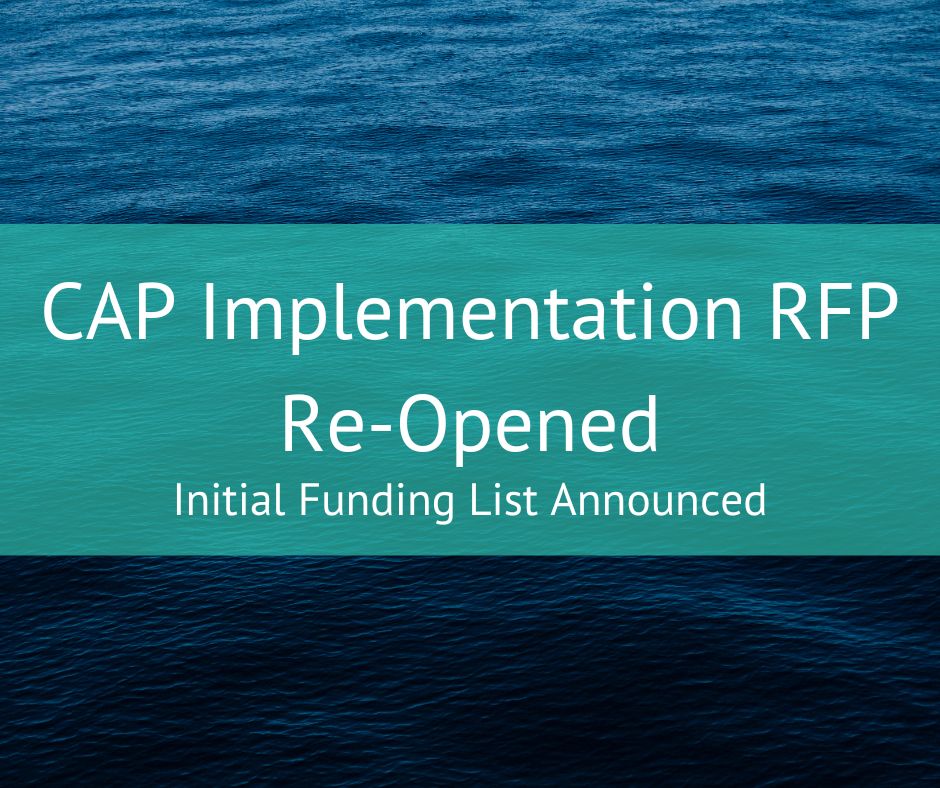On June 1, the Stormwater SIL announced $3.5 million in funding for projects to study and clean up toxic chemicals in Puget Sound. $2 million is still available for projects to prevent long-lasting toxic chemicals from entering local waters.
More...
The Stormwater Strategic Initiative Lead Team has announced the initial list of funded projects submitted to the Toxics In Fish solicitations for Researching Contaminants of Emerging Concern (CECs) and Implementing Chemical Action Plans (CAP). In addition, we are extending the application period for CAP implementation proposals until August 15, to fund additional projects to clean up sources of some of the most harmful chemicals for people, fish, and the environment.
Visit the Stormwater SIL RFP webpage to apply: Chemical Action Plan Request for Proposals
There is still grant funding available under the Toxics in Fish Request for Proposals (RFP) for projects of up to $1,000,000 that implement CAP recommended actions (such as environmental monitoring or replacing products with safer alternatives) that will reduce sources and discharges of PFAS, PCB, and PBDE. Chemical Action Plans are science-based strategies to reduce risk of exposure and eliminate sources of toxic chemicals that impact human and environmental health. These chemicals end up in our waterways from a variety of sources, with harmful impacts to fish and marine mammals, the marine food web, and people. In this RFP, we are interested in projects that will keep these chemicals out of stormwater (for example, by reducing use of products containing them) or treat contaminated stormwater to remove them, including researching innovative chemical or physical treatments.
Raising awareness of this funding opportunity
We want to make sure this funding opportunity reaches a wide audience of practitioners and organizations in a community of practice that focus on toxics reduction and source control. This could include (but is not limited to):
- Tribes
- Local governments
- School Districts
- Fire Departments
- Local Integrating Organizations
- Local leaders
- Nonprofit organizations
If you or someone you know is reflected in this list, we invite you to consider developing project proposals that address one or more of the following recommended actions. Your local knowledge can help us expand the reach of our RFP and implement solutions for cleaner, healthier communities.
We are most interested in funding projects that address tribal treaty rights or include an Environmental Justice component that supports historically underserved communities or vulnerable populations.
Questions about what activities fit under this RFP and how it can support your organization’s work? Please contact Dustin Bilhimer or attend our applicant office hours on July 11 at 10:00am or July 13 at 2:00pm.
PFAS Reduction Actions
PFAS (perfluoroalkyl and polyfluoroalkyl) is a large class of chemicals commonly used in common consumer products (for example, cosmetics and personal care products, food packaging, water repellent materials, and non-stick cookware). These chemicals last a long time in the environment and are harmful to people and animals. Recommendations to support implementation of this CAP include:
- Manage environmental contamination - replace contaminated products with alternatives that do not contain PFAS.
- Reduce PFAS in products - Identify priority products and implement reduction actions to find better alternatives.
PCB Reduction Actions
Polychlorinated Biphenyls (PCBs) were banned in 1976 but products containing PCBs are still present in our built environment including lamp ballasts, electrical equipment, building materials, and some consumer products. There are resources available on How to Find and Address PCSs in Building Materials. Recommendations to support implementation of this CAP include:
- Assess older schools or other public buildings for the presence of PCB containing materials.
- Replace building materials containing PCBs with non-toxic alternatives.
- Conduct a public education campaign.
- Expand environmental monitoring to identify PCB hotspots or investigating air deposition.
PBDE Reduction Actions
Polybrominated diphenyl ethers (PBDEs) are chemicals commonly used as flame retardants in many consumer products including clothing, foam, plastics, and other products. Studies show that PBDEs can accumulate in humans, our food and indoor environments, and in our environment, wildlife, birds, and aquatic species where potential health effects include cancer, endocrine and reproductive effects, and neurological and developmental disorders. Consumer products that children are exposed to are of highest concern. Recommendations to support implementation of this CAP include:
- Product replacement efforts and outreach, especially to underserved communities and vulnerable populations in the Puget Sound region.
- Studies to explore incentives to encourage manufacturers to develop safer, effective alternatives as well as product redesign changes that eliminate the need for PBDEs.
We want to hear from you
If you have questions about project eligibility or the RFP application, please contact the RFP Coordinator, Libby Gier (libby.gier@ecy.wa.gov). For technical questions (for example, whether a proposed project is within scope for this RFP), please contact Dustin Bilhimer (dustin.bilhimer@ecy.wa.gov).
A recording of an informational pre-application webinar is available, along with the presentation slides. In addition, the Stormwater SIL team will hold two online office hours to answer applicant questions in July:
- Tuesday, July 11, 10am-11am Link to join via Teams
- Thursday, July 13, 2pm-3pm Link to join via Teams
The RFP and applications for project proposals can be found here and will be accepted between June 1 and August 15, 2023.

